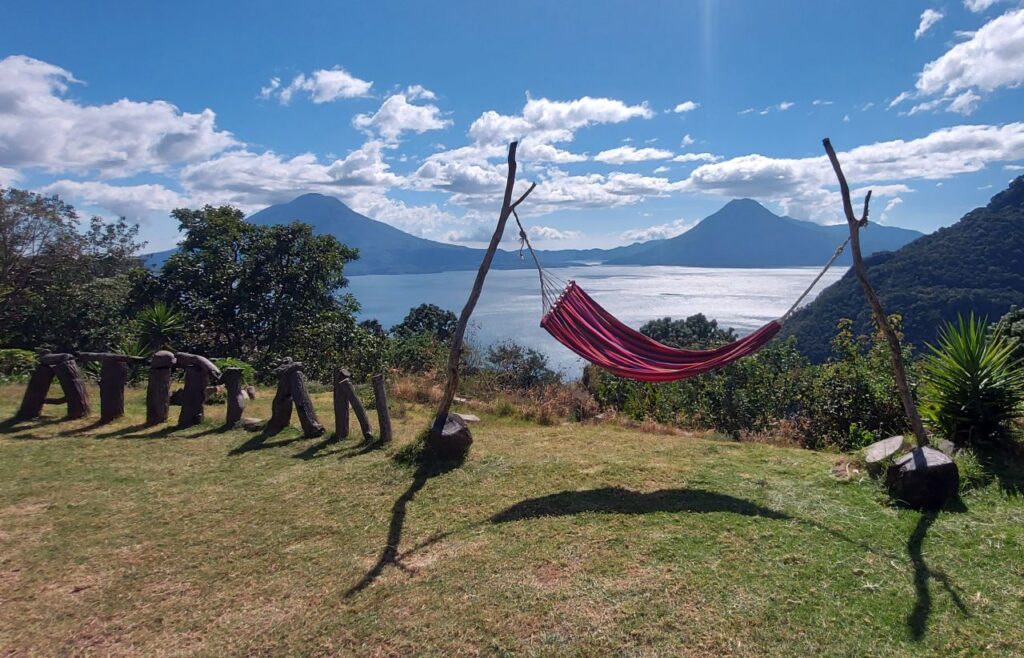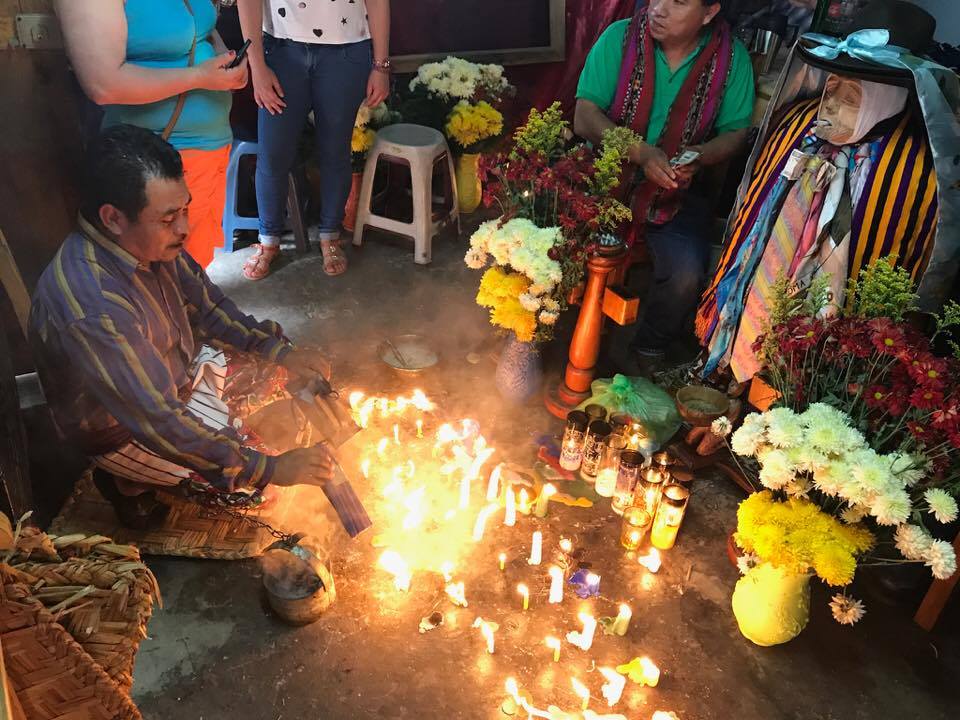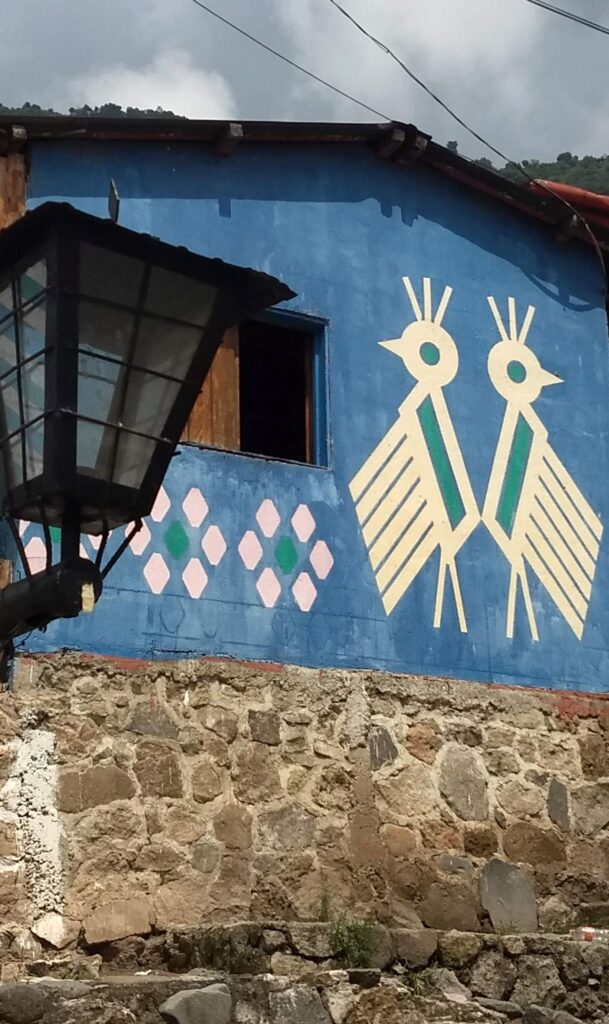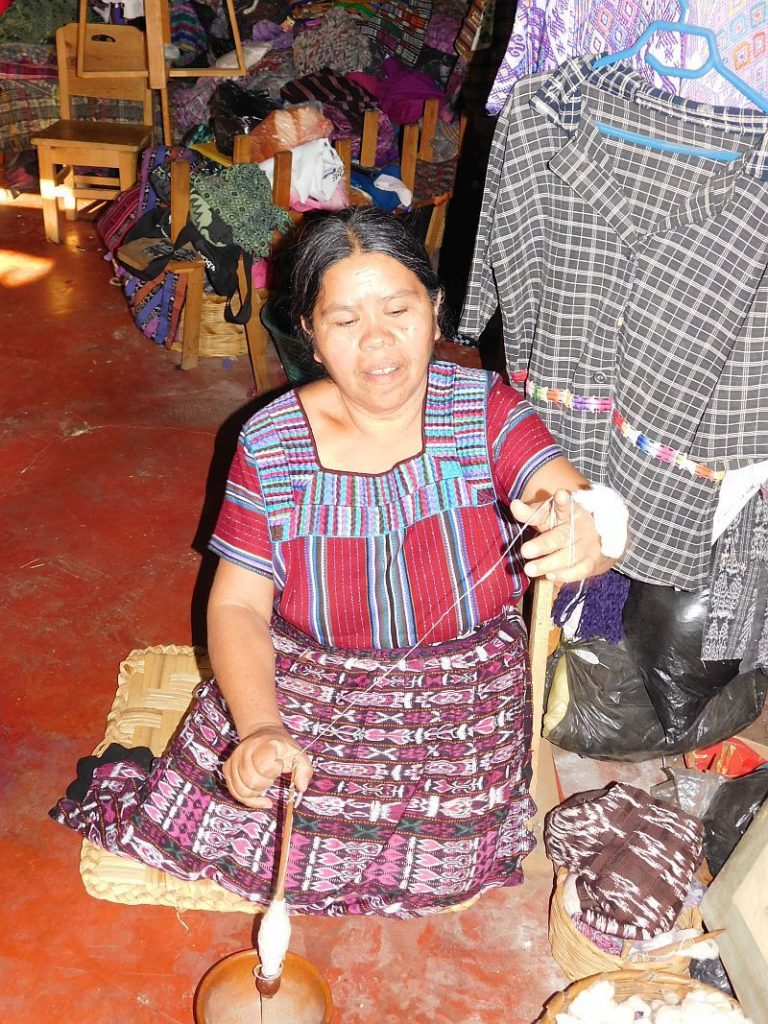More About Lake Atitlan (1,560m / 5,100ft)
“It is really too much of a good thing”
Aldus Huxley, Beyond the Mexique Bay, 1934


Although Huxley’s famous quote is often misquoted as Lake Atitlan being “the most beautiful Lake in the world”, there is no denying the truth that Lake Atitlan is seen by many as the Eighth Natural Wonder of the World!
He wrote Beyond the Mexique Bay during his extensive travels through Central America in the 1930s, when he, like every other traveller to this special Lake, was left almost speechless by its beauty! This huge, ever-changing body of water has a colourful and lengthy history inextricably interwoven with Mayan culture that more than matches its mile-deep depths and the vibrant surrounding Mayan villages.
The country of Guatemala, the ‘Land of Eternal Spring’, has attracted many visitors throughout the ages and although a popular tourist destination, it still remains something of a hidden treasure. Once visited, especially Lake Atitlan, it is never forgotten; it has a magnetic effect on many, who return year after year, or, end up staying – be warned! (Perhaps you should take a look at our sales listings?!)
It is nigh on impossible not to be affected by the spectacular situation of Lake Atitlan. It radiates mystique and magic, which explains only too well why the Lake has played such a significant role in Mayan culture. Some academics believe it appears in the Mayan holy book, ‘Popul Wuj’: the story of the creation of man and Mayan culture. The kaleidoscopic Mayans living by the Lake help to maintain these characteristics, as do the myths that surround them.
The Lake’s profound and largely unexplored depth (up to 320 metres/1,050 feet in some places) has led to a variety of tales about sunken villages, lake beasts, and mysterious floating lights. Like so many other lakes around the world, Atitlan has its own resident monster: a dragon-like creature called Chakona or Arcoirs, who lurks down in the lake’s deepest depths and lives in a cave on the north shore, where the Lake is at its deepest.
It is believed that over 100,000 years ago a series of huge volcanic eruptions rocked Central America. Several times larger than Pompeii, volcanic stone and lava were violently ejected and thrown as far away as Guatemala’s Caribbean coast, and even the Gulf of Mexico. A gaping hole, now surrounded by three smaller volcanoes, was left: San Pedro to the west; Toliman to the south; and the largest volcano Santiago, behind the latter. This caldera, which later filled with water, became known as Lake Atitlan. It contains 13km by 26km / 8 miles x 16 miles of continually changing waters, transforming from glassy smooth in the mornings, to a blanket of white horses in the afternoons, when the ‘Choqumil/Xocomil’ wind moves in. Occasionally the North wind (Norte) races across the lake for four to five days, often bringing a change of weather.
Why Visit Lake Atitlan?
The reasons are endless: colourful and magical Mayan culture and history, spectacular ancient Mayan ruins, mountains, volcanoes, beaches, jungles, cloud forests, colonial towns, and that’s for starters! However, we suggest that it is best you come here yourself – you will not to be disappointed!
Lake Atitlan is one of many beautiful places to visit in this extraordinary and spectacular country, which lies just south of Mexico and Belize and to the north of El Salvador and Honduras in the ismuth of Central America. It is one of the country’s most popular tourist sites.
Like many of its neighbours it has had a complex and bloody history, but now it is a perfect holiday/vacation destination. It sits at an altitude of 1,560m or 5,600ft is, and is dominated by three centurion volcanoes (don’t worry – inactive!). It is not hard to understand why the Mayan Culture believes this is where life began.
The Lake is extremely sacred to all Mayans, and it is easy to understand why when Mayan Culture believes this is where life began. They believe that the Lake is the belly button of Madre Tierra (Mother Earth). It is still as central a point to Mayan culture now, as it has ever been; small ceremonies are constantly being conducted on its shores. It is also the deepest lake in Central America at more than 300 metres or 1,114ft – adding to its mysticism!

Guatemalan Weather

Guatemala has two seasons: Rainy (May-Oct) and Dry (Nov-Apr), however in the highland area, where Lake Atitlan and the beautiful colonial city of Antigua are, the temperatures do not change much. It has a perfect, temperate climate (hence ‘Eternal Spring‘) where the days are warm and barmy around 25°C (77°F) and then the evenings are comfortably cool, approx. 18°C (64°F).
During the rainy season it generally rains in the afternoons and evening, often heavily for several hours. September and October, which are during the main part of the hurricane season, can see several days of rain. However, when it is not raining the skies are clear making it a country that can be visited year-round.
Mayan Culture
The 21st century has only recently begun to touch the centuries-old traditional way of life of the indigenous people who live in the small communities scattered around its shores. The indigenous in Guatemala are of Mayan decent and make up around 60% of the country’s population, although around the lake that percentage is nearer to 98%. There are numerous Mayan groups who not only live in the Sololá province of Lake Atitlan, but are spread throughout the temperate mountain and volcanic regions of Guatemala, as well as down towards both coasts. Their colourful culture has only relatively recently begun to captivate tourists from all over the world, who flock to see their culture, ruins, rituals, artesania (art & crafts) markets, and buy the multitude of tipica (art & crafts) on offer.

Some Interesting Facts About Guatemala
- Guatemalan Population is approx. 17 million
- National Language is Spanish, but there are 22 indigenous languages still spoken
- Guatemala’s original name is Quauhtlemallan, which means “Land of Many Trees”
- More commonly known as ‘The Land of Eternal Spring’, due to the clement weather in the Highlands
- Money is Quetzal
- National Bird is the Quetzal
- National Flower is ‘La Monja Blanca’ or White Nun Orchid
- National instrument is the Marimba
- After the celebrations of Semana Santa, the next best celebration is Dia de los Muertos and the amazing Kite Festival in Sumpango on 1st November every year
- There are 37 volcanoes of which 3 are active: Fuego, Pacaya, and Santiaguito
- National Day of Independence is 15th September
- The main holidays are Christmas, New Year, and Holy Week / Semana Santa
- Coffee is Guatemala’s biggest export
- The Capital of Guatemala is Guatemala City. The old capital is Antigua
- Guatemala has THREE UNESCO World Heritage Sites: Tikal National Park, Antigua Guatemala, and The Ruins of Quirigua
- It is believed the first ever chocolate bar came from Guatemala!
- The longest war in Latin American History was the Guatemalan Armed Conflict from 1960 until 1996
- National Tree is the Ceiba
